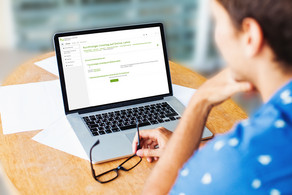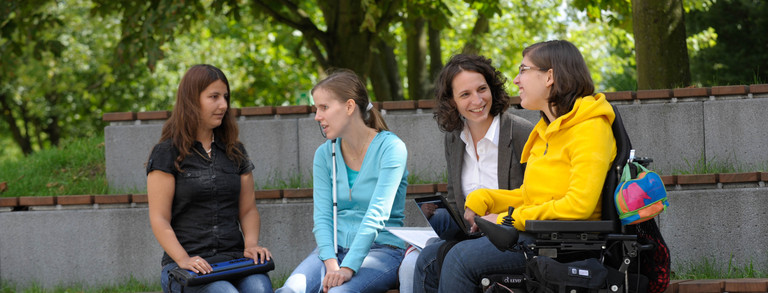Working areas at DobuS
With its services, DoBuS not only supports students, but also teachers and all other members of the university in establishing equal study opportunities for students with disabilities. In this context, Counseling and the area of Accessible Media and Assistive Technologies form the two main working areas of DoBuS. Moreover, research projects are used to establish new services and to further develop general structures and services at the university in accordance with the concept of disability mainstreaming.
To study with a disability or chronic illness may raise a variety of questions, needs and obstacles. The counseling services at DoBuS are based on the principle of voluntary participation. The counseling starts from the individual study situation of each student. These are experts in their own rights and should be supported in finding and implementing proactive and self-responsible options for action and solutions. Thereby, some members of the DoBuS team can draw on their own experiences with disabilities and incorporate them as part of the concept of peer-counseling into the counseling process.
Following the bio-psycho-social model of the ICF, the counseling of students focuses not only on the individual effects of impairment in higher education, but also on the contextual factors that interfere with equal participation in university. The findings from individual counseling are used as part of the Dortmund working approach to reduce obstacles at universities and to create improved inclusive study conditions.
An overview of specific counseling services can be found in the section “Students” and “Prospective Students”.
Apart from students, DoBuS also advises all other university employees on the topic of studies and disabilities in accordance with the concept of Disability Mainstreaming. An overview of the specific counseling services can be found in the “Staff” section.
For students with disabilities, assistive technologies can make an important contribution to the success of their studies. For example, students with visual impairment or blindness often use magnification or speech output software. Students with a hearing impairment use special devices, called microport devices, which transmit lectures to their hearing aid. Students with motor impairments use speech input software or specialized keyboards. There is a wide range of assistive technology and software available, and a large variety of opportunities to apply them during studies. DoBuS advises students on the possibilities and limitations of using assistive technology. DoBuS also provides a workroom and assistive technology center where students have access to a diverse selection of assistive technology tools. This enables university students to work digitally and write exams accessibly. In individual training sessions and workshops, DoBuS offers students the opportunity to further develop their own skills in the use of assistive technology based on their individual study requirements. In the section “Accessible Media and Assistive Technology” you can find extensive information about the services provided for students.
For assistive technologies to be effective and students with disabilities to have equal opportunities to study, it is of crucial importance that (digital) learning environments and study materials are made accessible. Moreover, in the interest of appropriate arrangements in particular cases, it may also be required that students need individual adaptations of materials that go beyond the standards of accessibility. In the section “Digital Accessibility”, you will find detailed information on how DoBuS support teachers and all other employees in creating accessible learning environments and materials.





